Table of Contents
ToggleUltimate Guide to Downgrade Samsung DeX from One UI 8
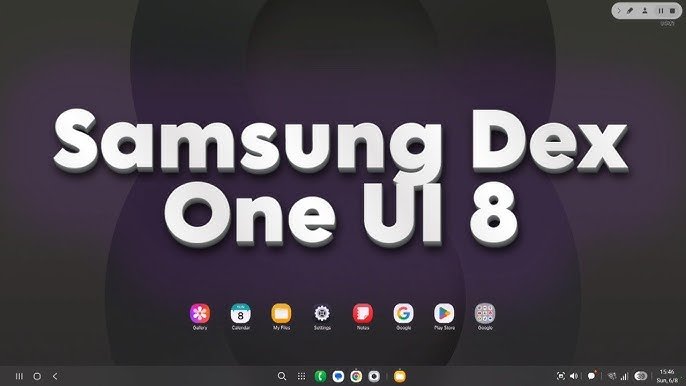
Introduction
Samsung has consistently pushed the boundaries of mobile productivity, and Samsung DeX is a standout example of this innovation. Designed to transform your smartphone or tablet into a full-fledged desktop experience, Samsung DeX enables users to connect their devices to a monitor, keyboard, and mouse to perform PC-like tasks on the go. From working on spreadsheets and presentations to multitasking across apps in a desktop-style interface, DeX offers a powerful, compact solution for both professionals and everyday users.
However, like many advanced software platforms, Samsung DeX is deeply tied to the version of One UI running on your device. With the release of One UI 8, Samsung introduced a range of enhancements aimed at improving user experience, security, and system performance. While this update brought some exciting features, it also introduced a few significant challenges especially for users who rely heavily on Samsung DeX.
What is Samsung DeX?
Samsung DeX (short for Desktop Experience) is a feature that allows Galaxy smartphones and tablets to connect to a larger display and offer a PC-like environment. First introduced in 2017 with the Galaxy S8, DeX has evolved over the years, eliminating the need for dedicated docking stations. Now, users can launch DeX using just a USB-C to HDMI adapter or wirelessly via smart TVs.
With Samsung DeX, your device runs a desktop interface where you can open multiple app windows, drag and drop files, use right-click functions, and more. It’s widely used by professionals for quick document editing, remote access, coding, and even video conferencing.
The beauty of DeX lies in its flexibility—you get a desktop experience without carrying a laptop. But that same flexibility is dependent on software stability and compatibility, which is why problems arise when major updates like One UI 8 cause DeX-related issues.
Why Downgrade from One UI 8?
While One UI 8 offers modern UI changes, improved privacy controls, and system optimizations, some users have reported performance hiccups and functional bugs—particularly with Samsung DeX. These issues range from display lag and application crashes to connectivity problems and incompatibility with external monitors.
For power users who depend on DeX for daily productivity, such problems can be disruptive. Instead of waiting for the next patch or hotfix, many users explore the option of a Samsung DeX downgrade to restore the reliability and smooth performance they enjoyed with previous versions like One UI 7.
A Samsung DeX downgrade allows users to roll back to an earlier firmware version where the DeX experience was more stable. Whether you’re experiencing screen scaling bugs, touchpad glitches, or Bluetooth connectivity issues with DeX on One UI 8, a downgrade may be your best solution until the latest update is fully optimized.
However, downgrading your firmware isn’t something to take lightly. It requires technical steps, specific tools like Odin, and proper firmware files. Failing to follow the process correctly could lead to data loss or even a bricked device. That’s why this guide is here—to walk you through the Samsung DeX downgrade process safely and effectively.
What You’ll Learn in This Guide
In this ultimate guide, you’ll gain a complete understanding of how to prepare for a downgrade, where to download the correct firmware, and how to use tools like Odin to flash your device. Whether you’re a tech-savvy user or a cautious beginner, this tutorial is structured to be clear and easy to follow.
If Samsung DeX on One UI 8 has been causing you headaches, don’t worry—you’re not alone. By the end of this guide, you’ll know exactly how to perform a Samsung DeX downgrade and get your productivity back on track.
Common Issues with Samsung DeX on One UI 8
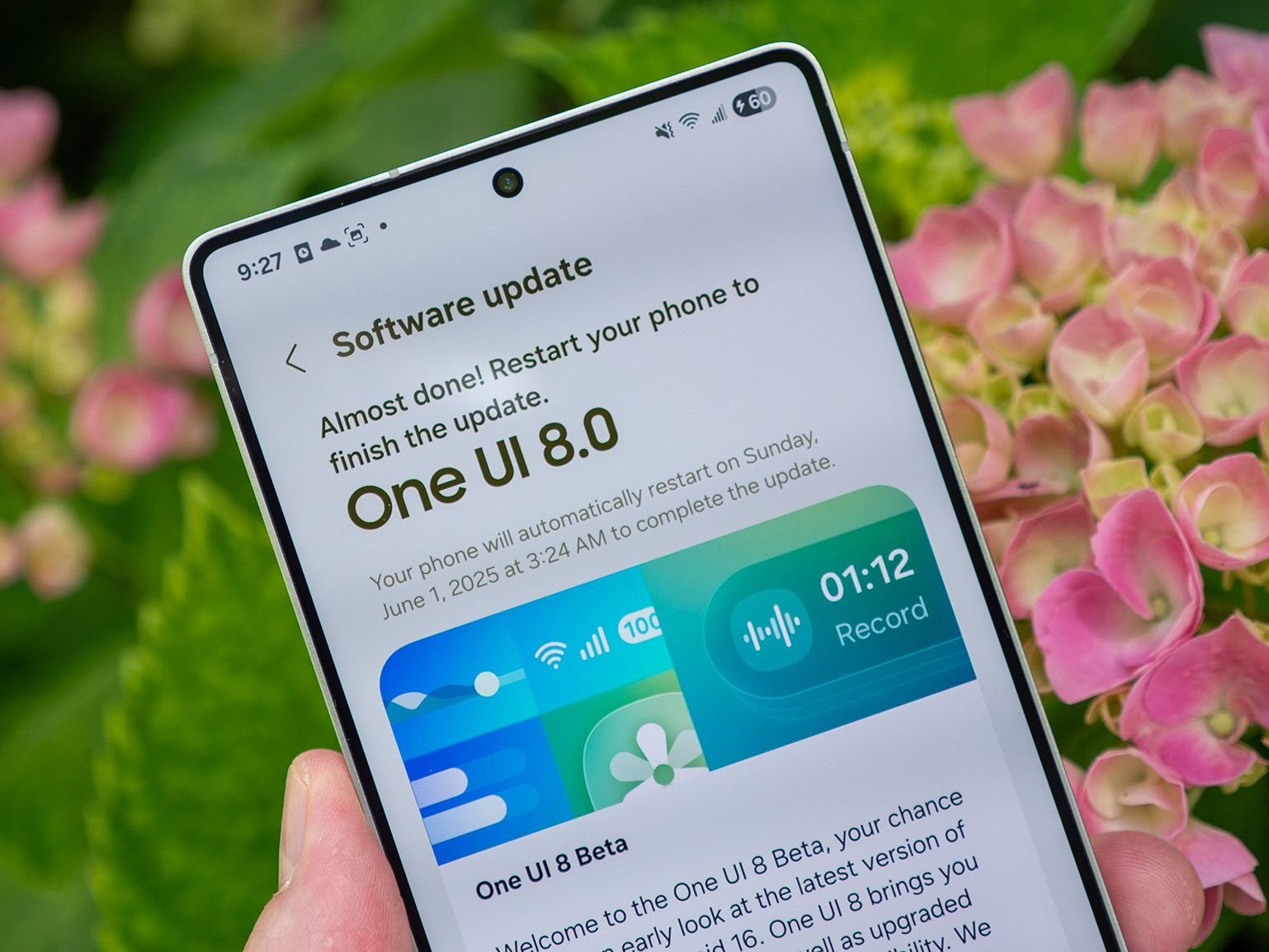
Common Issues with Samsung DeX on One UI 8
While One UI 8 introduces new features and interface enhancements, it has also caused several problems for users who rely on Samsung DeX for daily productivity. Many have reported functionality drops and usability issues that didn’t exist in earlier versions. Below are the most common issues that have led users to consider a Samsung DeX downgrade.
1. Performance Lag
One of the most noticeable issues after upgrading to One UI 8 is a significant drop in performance while using Samsung DeX. Users have experienced:
Sluggish response times when opening or switching apps
Frame rate drops during multitasking
Freezes or stutters when dragging windows or typing
Overall system slowdown, especially on older Galaxy models
This lag can be especially frustrating during presentations, online meetings, or while working with multiple documents. For professionals using DeX as a laptop replacement, these delays can lead to productivity loss and poor user experience. In most cases, users claim the system ran smoothly before the update—making Samsung DeX downgrade a necessary step to restore usability.
2. App Compatibility
Another major issue with Samsung DeX on One UI 8 is reduced app compatibility. Some apps that worked flawlessly before the update may now:
Refuse to launch in DeX mode
Render incorrectly (e.g., incorrect resolution or distorted layout)
Crash upon opening
Display touch or input issues
For example, productivity apps like Microsoft Excel or Adobe Reader may not support DeX features properly under the new One UI. Custom enterprise apps also seem to struggle more under the updated environment. These problems are often due to changes in One UI’s APIs or how DeX manages screen scaling and hardware access.
Such incompatibility forces many users to either switch back to mobile view or abandon certain apps entirely. If your daily workflow depends on specific tools, this could be a major reason to consider a Samsung DeX downgrade.
3. Connectivity Problems
Reliable connectivity is a backbone of Samsung DeX’s functionality, especially when using external monitors, keyboards, and wireless input devices. Unfortunately, One UI 8 appears to have introduced new connectivity bugs, including:
Intermittent disconnections with HDMI monitors
Unstable Bluetooth connections with keyboards and mice
Delays in recognizing USB-C adapters
DeX mode failing to launch altogether
Some users report that DeX automatically exits when switching apps, while others face challenges in detecting the external display. These issues are not just inconvenient—they can completely halt your ability to use DeX effectively.
In professional settings, where every second counts, unstable connectivity simply isn’t acceptable. Many users opt for a Samsung DeX downgrade to eliminate these interruptions and get back to a seamless desktop-like experience
Precautions Before Downgrading
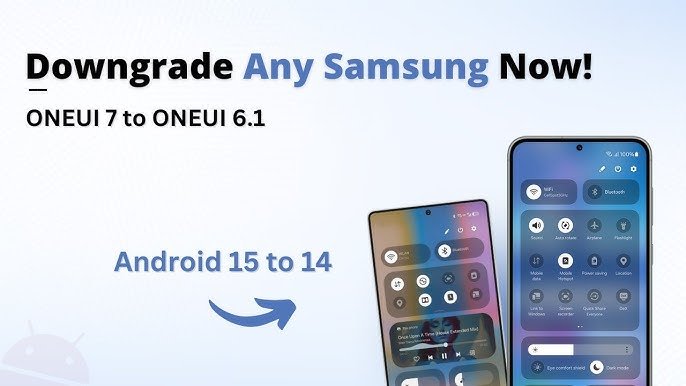
Precautions Before Downgrading
Downgrading your Samsung device’s firmware—especially for restoring full Samsung DeX functionality—is not a decision to take lightly. While it can solve performance, compatibility, and connectivity issues caused by One UI 8, it also comes with some risks. Before you begin the Samsung DeX downgrade process, it’s crucial to take the right precautions to avoid data loss, system failure, or voiding your warranty.
Below are the essential steps to follow before initiating a downgrade:
1. Backup Your Data
Downgrading involves flashing your phone with an older firmware version, which erases all your personal data, including:
Contacts
Messages
Photos and videos
Apps and app data
Settings and preferences
To avoid losing this information:
Use Samsung Smart Switch to create a full backup on your PC or Mac.
Upload your media files and documents to Google Drive, Samsung Cloud, or an external hard drive.
Sync your contacts and calendar with your Google account.
Once the downgrade is complete, you can restore your data during device setup.
2. Check Device Compatibility
Not all Samsung Galaxy devices allow downgrading easily. Some newer models or carrier-specific phones may have locked bootloaders or software restrictions that prevent firmware rollbacks.
To avoid bricking your device:
Confirm your exact model number (e.g., SM-G991B) under Settings > About phone.
Ensure that the firmware you download for the downgrade matches your model and region code.
Do not try to install firmware from a different country or variant—it may cause boot errors or hardware incompatibility.
3. Understand the Risks
Downgrading is not officially supported by Samsung, and it can potentially:
Void your warranty (especially if Knox is tripped)
Cause unexpected boot loops or crashes if done incorrectly
Lead to permanent data loss
Make some apps or features stop working due to version conflicts
You must also disable automatic updates after the downgrade to prevent your device from reinstalling One UI 8 in the background.
If you proceed, you’re taking full responsibility for any issues that arise. That said, when done carefully and correctly, a Samsung DeX downgrade can significantly improve your device’s performance and restore DeX stability.
4. Charge Your Device & Use Original Cable
Firmware flashing is a power-sensitive process. Make sure:
Your device is charged to at least 70%
You’re using the original Samsung USB-C cable
You connect directly to a reliable USB port on your PC (avoid hubs)
Interruption during flashing due to low battery or faulty cables can leave your phone in an unbootable state.
5. Download All Required Tools First
Before you begin, download and install:
Odin Tool (latest version)
Samsung USB drivers
The correct stock firmware (One UI 7 or earlier) from trusted sources like SamMobile or Frija
Having everything ready before starting ensures a smooth downgrade process without last-minute delays or mistakes.
Tools You’ll Need
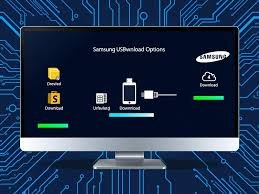
Tools You’ll Need
To successfully perform a Samsung DeX downgrade from One UI 8 to an earlier version (like One UI 7), you’ll need a specific set of software tools and files. These are essential for flashing the older firmware onto your Samsung device. Missing or using the wrong versions of these tools can lead to errors—or worse, a bricked phone.
Below is a complete list of tools you must gather before starting the downgrade process:
1. Odin Flash Tool (Windows Only)
Odin is the official Samsung firmware flashing utility (used internally by Samsung service centers). It allows users to install stock firmware manually.
Recommended Version: Odin v3.14.4 or newer
Make sure you download it from a reliable source, such as XDA Developers or trusted Android forums.
Avoid unofficial or modified versions to prevent errors.
📌 Note: Odin only works on Windows computers.
2. Samsung USB Drivers
To ensure proper communication between your Samsung device and your PC, you need to install Samsung USB drivers.
Download from Samsung’s official site or included with Smart Switch.
Restart your PC after installing for best results.
Without these drivers, Odin may not detect your device in download mode.
3. Official Stock Firmware
The core of the downgrade is flashing your phone with an earlier version of Samsung firmware (like One UI 7).
Download from:
Make sure the firmware matches:
Your device model (e.g., SM-G998B)
Your region or carrier (e.g., INS for India, XEU for Europe)
An earlier Android version than One UI 8 (e.g., Android 12/One UI 4)
Never flash firmware from a different region or device model—it can soft brick your phone.
4. Archive Extractor (e.g., 7-Zip or WinRAR)
Firmware files are often downloaded in .zip or .rar formats. Use tools like:
7-Zip (Free and lightweight)
WinRAR
Extract them to a folder where you can easily access .tar.md5 files required by Odin.
5. A Reliable USB-C Cable (Preferably Original)
Use your original Samsung USB-C cable or a high-quality replacement. Low-quality cables may cause disconnections during flashing.
Optional Tools (Recommended)**
Smart Switch (for backup and restore)
Frija Tool (to get the latest/official firmware directly from Samsung servers)
SamFW Tool (for region unlocking or firmware search)
Where to Download Official Samsung Firmware
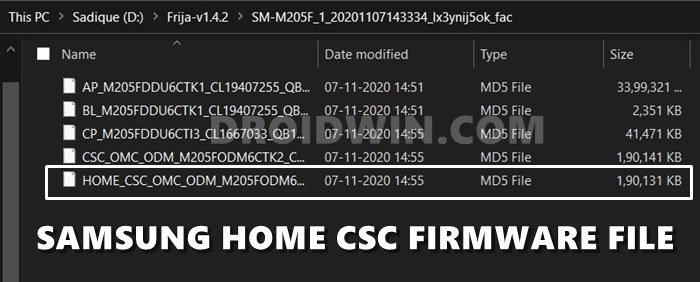
Where to Download Official Samsung Firmware
When preparing for a Samsung DeX downgrade, one of the most important steps is obtaining the correct official firmware for your device. Using a mismatched or unofficial file can lead to serious issues such as boot loops, bricking, or loss of network connectivity.
Below are the best and most trusted sources to download official Samsung firmware for downgrading from One UI 8 to an earlier version:
1. SamMobile (https://www.sammobile.com/firmwares/)
SamMobile is one of the most popular and widely trusted platforms for Samsung firmware.
Official stock firmware directly from Samsung servers
Large database of firmware by model and region
Includes full version history, so you can select One UI 7 or earlier
Free users have slow download speeds (consider a free account or use a downloader tool)
Steps:
Go to SamMobile Firmware Page
Enter your device model (e.g., SM-G996B)
Choose your region (e.g., INS for India)
Select a firmware version lower than your current One UI 8 version
Download the
.zipfile and extract the.tar.md5files for Odin
2. Frija Firmware Downloader (Tool)
Frija is a desktop tool that downloads direct firmware files directly from Samsung’s official servers.
Fast downloads without slow speeds like SamMobile
Always fetches the latest available version per region
Allows version control by inputting the firmware version manually
Steps:
Download Frija from XDA Developers
Launch it on Windows
Enter your model number (e.g., SM-G998B)
Enter your CSC (e.g., XEU for Europe, INS for India)
Click Check Update, then Download
You must disable antivirus/firewall if it blocks the connection to Samsung servers.
3. SamFW.com (https://samfw.com/)
SamFW is a newer but highly efficient and safe site for Samsung firmware.
Easy search interface with device model and region
Offers both OTA and full firmware
Has an auto-detect feature for the latest and downgrade options
Fast free download without logging in
Steps:
Visit SamFW.com
Enter your Samsung model
Filter by country/region and version (select One UI 7.x or older)
Download the firmware and extract it using 7-Zip or WinRAR
Important Tips When Downloading Firmware:
Double-check the model number: Only download firmware that exactly matches your phone’s model (e.g., SM-G991B ≠ SM-G991U).
Match the region (CSC code): Flashing mismatched regions can disable VoLTE, Wi-Fi calling, or even cellular service.
Verify One UI version: Ensure you’re not accidentally downloading One UI 8 again.
Step-by-Step Downgrade Process for Samsung DeX
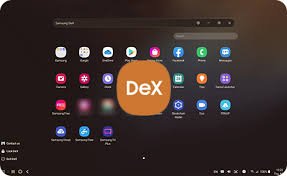
Step-by-Step Downgrade Process for Samsung DeX
Downgrading your Samsung phone’s firmware to regain a stable or preferred Samsung DeX experience involves flashing an older stock firmware using Odin. Follow these instructions carefully to avoid errors or bricking your device.
Disclaimer: This process may void your warranty, erase all your data, and can potentially damage your device if not done correctly. Proceed at your own risk.
Step 1: Backup Your Data
Before starting, make sure you’ve done a full backup.
Use Samsung Smart Switch or Google Drive
Save all media, messages, contacts, and files
Downgrade will factory reset your device
Step 2: Download All Required Tools
Ensure you have everything ready:
✅Odin Tool (v3.14.4 or later)
Samsung USB Drivers
Correct stock firmware (One UI 7) from SamMobile, Frija, or SamFW
7-Zip or WinRAR to extract firmware
A Windows PC and original Samsung USB-C cable
Install the Samsung drivers and extract all files to a dedicated folder.
Step 3: Boot Device into Download Mode
To flash firmware, your phone must be in Download Mode:
Turn off your phone
Hold Volume Down + Bixby + Power (or Volume Down + Volume Up, depending on model)
When you see a warning screen, press Volume Up to confirm and enter Download Mode
Step 4: Launch Odin and Connect Device
Open Odin.exe as Administrator
Connect your phone via USB cable
In Odin, the ID:COM port should turn blue – this means your phone is detected
Make sure only Auto Reboot and F. Reset Time are checked in the Options tab
❌ Uncheck Re-Partition
Step 5: Load Firmware Files into Odin
From the extracted firmware folder, you’ll have 4–5 .tar.md5 files:
BL (Bootloader)
AP (System) – this may take time to load
CP (Modem)
CSC or HOME_CSC
Use CSC to perform a full wipe (recommended for clean downgrade)
Use HOME_CSC to retain data (not recommended for major version downgrade)
💡 Drag and drop each file into the matching field in Odin.
Step 6: Start the Downgrade
Once all files are loaded and Odin is ready:
Click the Start button
Wait patiently – the process may take 5–10 minutes
Your device will reboot automatically once complete
If successful, Odin will show a green PASS!
Step 7: Initial Setup After Downgrade
On first boot, the device will take longer to start – this is normal
Set up your device like new
Optionally restore your backup using Smart Switch or Google account
Step 8: Disable Auto Updates
To prevent One UI 8 from auto-installing again:
Go to Settings > Software update
Disable Auto download over Wi-Fi
Turn off Security updates if available
You can also use Package Disabler Pro to block update services (optional)
You’re Done!
You have now successfully performed a Samsung DeX downgrade and restored a more stable or functional version. You should notice improvements in:
App compatibility
DeX connectivity
Reduced lag or glitches
Troubleshooting Downgrade Issues
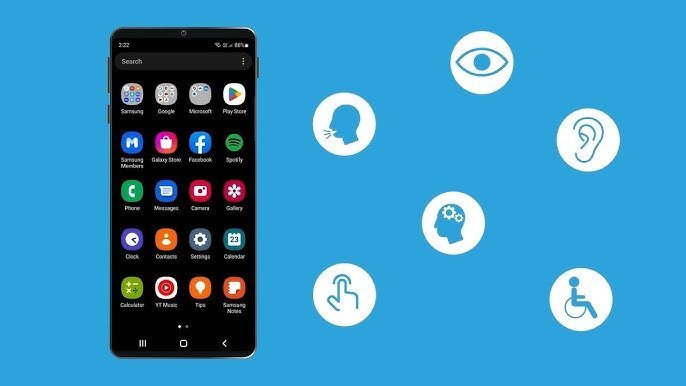
Troubleshooting Downgrade Issues
Even with the correct files and tools, things can sometimes go wrong during a Samsung DeX downgrade process. This guide addresses the most common issues and offers solutions to help you recover your device safely.
1. Odin Stuck on Setup or Fails at Start
Issue: Odin freezes on “SetupConnection…” or fails with a red “FAIL!” message.
Solutions:
Ensure you’re using the correct firmware for your exact device model.
Use Odin v3.14.4 or newer for One UI downgrades.
Try a different USB port (preferably USB 2.0).
Always use the original Samsung USB cable.
Reboot your PC and run Odin as Administrator.
Disable Samsung Kies or any other Samsung software that may interfere.
2. Boot Loop After Downgrade
Issue: Phone gets stuck in a boot loop or keeps restarting after flashing.
Solutions:
Reboot into Recovery Mode (Power + Volume Up + Bixby) and choose:
Wipe data/factory reset
Then Reboot system now
Make sure you used CSC file (not HOME_CSC) when flashing
Flash again with full firmware, ensuring no files are corrupt or mismatched
3. FRP Lock / Verification Failed
Issue: After downgrade, device says “Custom binary blocked by FRP lock” or fails with “Verification failed”.
Solutions:
If Factory Reset Protection (FRP) is enabled, you must know your Google account credentials from the original setup
Flash latest full firmware to restore access, then reattempt downgrade with FRP disabled
To prevent this:
Go to Settings > Accounts > Google
Remove all Google accounts before downgrade
4. No Signal or IMEI Missing
Issue: After downgrade, device has no cellular signal or shows “Unknown baseband.”
Solutions:
This often means the CP (modem) file wasn’t flashed or was corrupted
Reflash using full firmware and double-check that the CP file is loaded in Odin
Make sure the firmware version matches your carrier or region (CSC code)
5. DeX Mode Not Launching or Crashing
Issue: Downgrade is successful, but Samsung DeX doesn’t work properly.
Solutions:
Try a different HDMI adapter or DeX station
Disable Developer Options > Force desktop mode (if enabled)
Reinstall DeX-related apps and clear their cache:
Go to Settings > Apps > Samsung DeX > Storage > Clear Cache & Data
Ensure the firmware includes DeX support for your model (some regional firmwares do not)
6. Files Not Detected in Odin
Issue: Extracted .tar.md5 files are missing or won’t load into Odin.
Solutions:
Make sure the firmware zip was fully extracted
Use tools like 7-Zip or WinRAR
Re-download the firmware if files are missing or damaged
Emergency Recovery Tips
If your phone is bricked, boot into Download Mode and flash the latest official firmware to recover
Use Samsung Smart Switch (PC version) > “Emergency Software Recovery” if available
Visit a Samsung service center as a last resort
Preventing Future Downgrade Issues
Always match firmware with device model and CSC code
Don’t interrupt the flashing process once started
Avoid downgrading multiple versions at once (e.g., One UI 8 → One UI 6)
Backup before every major system change
Final Thoughts
Downgrading from One UI 8 to an earlier version may seem like a drastic step, but for users experiencing performance lags, app crashes, or connectivity problems with Samsung DeX, it can offer real relief. While the process involves technical steps and certain risks, this guide has outlined a safe, structured path to a successful Samsung DeX downgrade.
The key is preparation:
Back up your data
Use the correct firmware for your device model
Follow the flashing instructions carefully
Whether you’re a power user, a developer, or simply someone who prefers the previous user experience, reverting to an earlier version of One UI could significantly enhance your productivity on Samsung DeX
Frequently Asked Questions (FAQs)
Q1. Is it safe to downgrade Samsung DeX from One UI 8 to One UI 7?
A: Downgrading is generally safe if done correctly using official firmware and tools like Odin. However, it may void your warranty, and data loss is likely—so always back up first.
Q2. Will I lose my data during the downgrade?
A: Yes. A downgrade typically involves a full system wipe. Be sure to back up everything before starting the process.
Q3. Can I use the HOME_CSC file to keep my data while downgrading?
A: It’s not recommended when downgrading between major versions (e.g., One UI 8 → 7). Using the standard CSC file is safer for system integrity.
Q4. Does Samsung DeX work better on One UI 7 than One UI 8?
A: Many users report improved stability, app compatibility, and lower lag on One UI 7, which is why some choose to perform a Samsung DeX downgrade.
Q5. Can I re-upgrade to One UI 8 after downgrading?
A: Yes, you can upgrade anytime by flashing the latest firmware via Odin or waiting for an OTA (Over-The-Air) update.
Q6. How do I prevent the phone from auto-upgrading again?
A: Disable “Auto download over Wi-Fi” in Settings > Software update and avoid accepting update prompts.
Q7. Is rooting required to downgrade Samsung DeX?
A: No, rooting is not necessary. You can downgrade using Odin and official firmware files.





